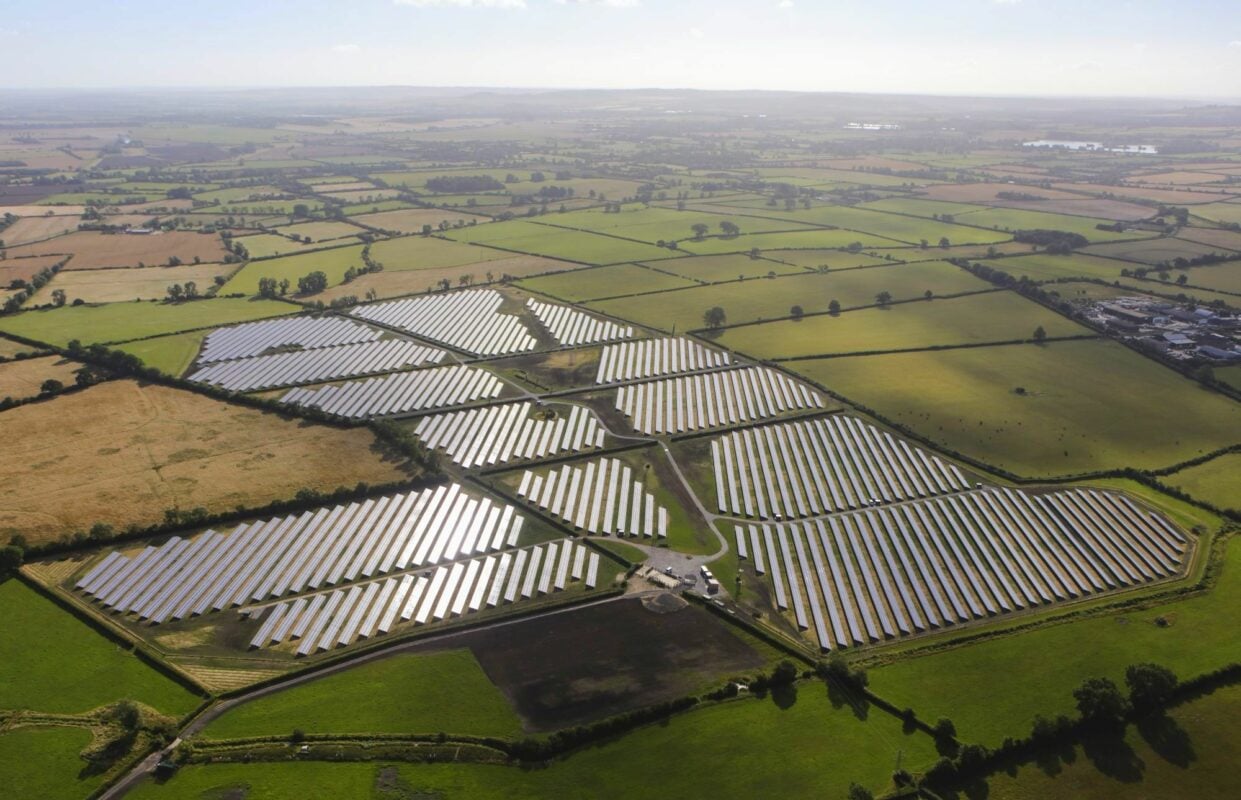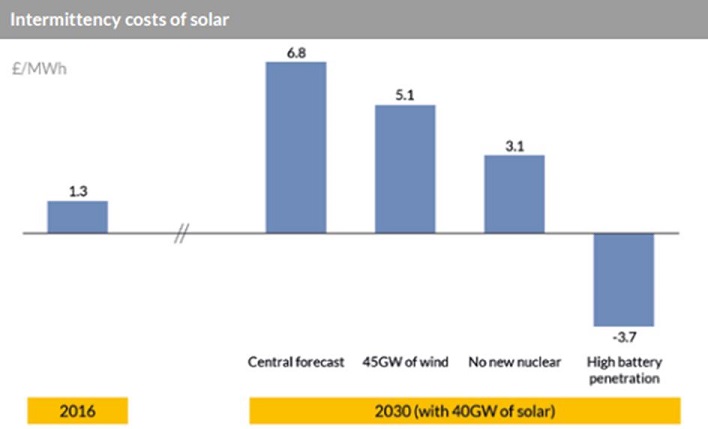
Intermittency costs associated with solar would rise to £6.8/MWh by 2030 if 40GW is deployed, but would provide a net benefit to the grid if 8GW of battery storage was brought online. Image: Baywa r.e.
A new report has estimated that when combined with greater integration of batteries, the intermittency of solar generation could provide a net benefit to the grid, removing one of the key criticisms of wider adoption of the technology.
‘Intermittency and the cost of integrating solar in the GB power market’ from Aurora Energy Research has concluded that should battery costs reduce to the level of £100/kWh by the early 2020s – roughly a third of the current price – 8GW of batteries would arise on the electricity system by 2030.
By this time the report expects solar capacity to have reached 40GW, causing intermittency costs to increase from £1.3/MWh associated with today’s 11GW of solar to around £6.8/MWh.
This cost is due to the increased availability from solar during daylight hours, particularly at specific times of high irradiance, which pushes the wholesale price down and “cannibalises” its own capture price.
However, Aurora estimates that in a scenario with 8GW of batteries on the system the overall intermittency cost would in fact become negative, falling to around £-3.7/MWh. This effectively means that the intermittency of solar provides a net benefit through enabling the entry of batteries.
This fall in costs is due to the ability of batteries to smooth out prices in the energy and balancing markets, thus reducing the impact that the timeliness of delivery has on intermittency cost. Batteries would also play a useful role in the capacity market, reducing capacity prices and therefore the cost of backup for renewables.
“Batteries and solar are a complementary combination, with batteries improving the capture prices of solar, and solar creating a generation profile whereby batteries can profitably store and then deliver to the market as needed,” the report states.

The addition of increased wind capacity or no new nuclear scenarios would also lower costs but only the addition of batteries provides a net benefit. Image taken from report by Aurora Energy Research.
The report concludes that even if battery storage is not added to the national energy landscape in such high numbers, the intermittency cost of integrating solar “do not provide a strong argument against the further build out of renewable generation”.
However, it adds that the £6.8/MWh of additional cost represents a ‘worst case’ scenario and expects battery prices to fall and allow for the technology to account for intermittency costs to be lowered or even become negative.
Dr Benjamin Irons, a director at Aurora Energy Research and lead author of the report, said: “Recent spectacular technological progress in renewable power generation puts the promise of cheap, low carbon power within reach. The challenge of integrating large volumes of renewables into the network in a way that provides reliable power to consumers and an attractive market for complementary generation technologies is the ‘last frontier’ in delivering the power system of tomorrow.
“Our analysis shows that such integration is possible and surprisingly affordable: the UK could more than triple the amount of solar power on the system by 2030, with associated costs of integration and backup so low as to be dwarfed by the enormous cost savings anticipated from falling solar prices over the same period.
Angus MacNeil MP, chair of the government’s energy and climate change committee which will be disbanded next week, said: “This welcome research puts numbers and maths behind the variability of solar power. It gives a concrete understanding of what solar has to offer compared to other technologies. Combined with reducing capital costs solar is going to be as cheap as source of power as you’ll find anywhere.”
The Solar Trade Association (STA), which commissioned the report, has said the findings affirm the value to consumers of government pursuing the smart power agenda. It also claims that solar fits exceptionally well with both storage and other variable generators like wind.
Paul Barwell, chief executive of the STA, said: “The report shows that solar sits right at the heart of the smart power agenda, which overall could save consumers billions every year. Solar is an enabling technology which brings down the cost of integrating wind and battery systems.
“We are on the cusp of an incredibly exciting technological transformation in the power system that the new department [for business, energy and industrial strategy] has an exceptional opportunity to drive forwards. If we seize this agenda now, the UK can own the clean energy future.”
The report has been published in advance of a similar study commissioned by the government last year when former energy secretary Amber Rudd ordered a report investigating the cost of electricity generation from both renewables and conventional sources. Over a year on the report has yet to be published.

